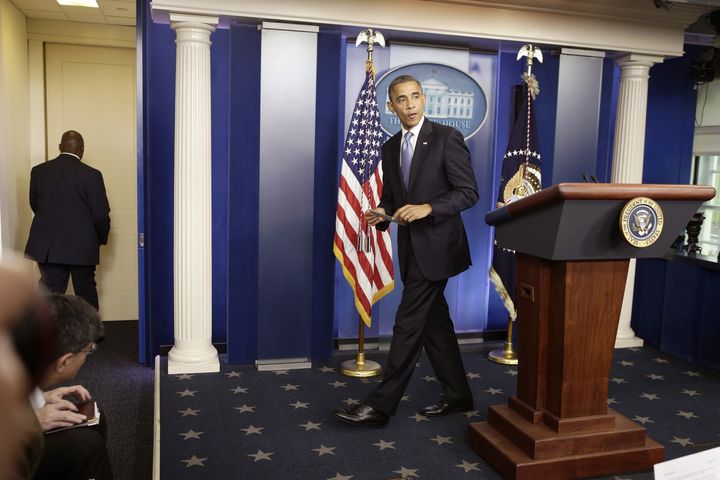
As everyone is pointing out, these presidential elections are ultimately all about the economy. In a good sign for President Obama, the latest report from the Commerce Department shows that the U.S. economy grew at a healthy 2% in the 3rd Quarter compared to 1.3% in the 2nd Quarter. Not only does this contradict the Romney campaign's monotone message about gloom and doom, but gives us a solid basis to compare the economic visions of the two candidates.
In the president's vision, America's economy will improve only if our fundamentals improve, and towards this end he wants to invest in education, infrastructure and clean energy. His goal is to make America stronger from the inside out and to increase our competitiveness on the world stage. By raising the quality of our education, the workforce of tomorrow will be better trained, more skilled, and better able to sustain an advanced economy based on global trade; similarly, investment in our crumbling infrastructure, from our roads and public transport systems to the national electricity grid, will provide a solid backbone for commerce; and finally, an increase in clean energy output will not only preserve the environment and free us from dependence on foreign oil, but also keep the engine of our industry running. Granted, we would continue to run a deficit and will probably have to tolerate higher taxes in the near term in order to pay for the development of our basic framework, but those investments have the potential to pay off in the long run.
Most importantly, the latest economic report shows that the president's approach, though slow and steady, is already beginning to work.Romney's plan, on the other hand, is all about short term gain. By reducing taxes by 20% across the board, making deep cuts in government spending, including on public services and social safety nets, and by eliminating regulations, the former governor of Massachusetts is effectively selling off our future to pay for today. He hopes that his approach will spur investment by the business community, create jobs, and improve the profitability of the private sector in the immediate future (and maybe it will), but by leaving the long term to simply take care of itself or be taken care of by the private sector, Romney is conveniently glossing over the likely fallout of his plan, or as they say, kicking the can down the road.
For one thing, a capitalist free-for-all under a Republican White House will likely lead to the creation of another asset bubble of the type witnessed in 2008, and result in another economic crisis when the bubble inevitably bursts. This would erase any gains made in the preceding years. Secondly, today's global and hyper-competitive business environment requires a nation to be prepared for the next round of technological advances, evolving skillsets, and increasing demand for infrastructure, which in turn require a meaningful investment by both the public and private sectors in our collective future. A spurt in business activity or individual wealth creation alone are not enough to sustain long term growth; issues such as excessive risk-taking by banks, wealth inequality (the top 10% in America own 75% of its wealth), the rising costs of healthcare, lack of education and job opportunities for children of middle and low income families, and other factors all need to be addressed if we want economic prosperity to continue for future generations.
The dangers of haphazard growth can be seen vividly in a country like India, where the economy, led by "hot" sectors like telecom, information technology, and business services have seen explosive growth over the past decade (6-10% per year) while other sectors like manufacturing and agriculture have remained stagnant due to a lack of infrastructure, and the country continues to struggle with poverty, government corruption, water and electricity shortages, inadequate public services, crumbling roads, diseases, and a host of other serious problems. In addition, prosperity in India, driven by economic reforms similar to what Romney is proposing for America, has benefited only a select few while doing little to elevate the nation as a whole (the top 10% in India own 53% of its wealth).
Because of these factors, the country's economic pace is now beginning to falter (5% in 2011), poverty remains high (37% of the population, and possibly higher), the road network is growing by only 4% per year while traffic is growing by 11%, skilled labor is becoming hard to find as the lack of job retraining keeps people locked into lower skill professions, and the systemic problems which were ignored in the country's race to the top now threaten to bog down the next wave of growth.
The economic plans of both candidates are imperfect, but in the bigger picture, President Obama's plan is a more mature approach that could set us on a firm track for the future, while Romney's nearsighted formula ignores several crucial variables, at best will put us on an uncertain track similar to India's, and most likely will blow up in our faces in about a decade (funnily enough, just after Romney's imagined two terms as president are over). As a banker, I have no intention of betting on a dubious plan like that -- which might put a few bucks in our pockets today but will cost us dearly in the future.Sanjay Sanghoee has worked at leading investment banks Lazard Freres and Dresdner Kleinwort Wasserstein as well as at a multi-billion dollar hedge fund. He has an MBA from Columbia Business School and is the author of a financial thriller, Merger, which the Chicago Tribune called "Timely, Gripping, and Original." Please visit www.sanghoee.com for more details.